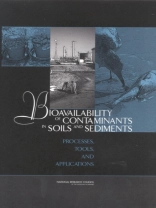Bioavailability refers to the extent to which humans and ecological receptors are exposed to contaminants in soil or sediment. The concept of bioavailability has recently piqued the interest of the hazardous waste industry as an important consideration in deciding how much waste to clean up. The rationale is that if contaminants in soil and sediment are not bioavailable, then more contaminant mass can be left in place without creating additional risk. A new NRC report notes that the potential for the consideration of bioavailability to influence decision-making is greatest where certain chemical, environmental, and regulatory factors align. The current use of bioavailability in risk assessment and hazardous waste cleanup regulations is demystified, and acceptable tools and models for bioavailability assessment are discussed and ranked according to seven criteria. Finally, the intimate link between bioavailability and bioremediation is explored. The report concludes with suggestions for moving bioavailability forward in the regulatory arena for both soil and sediment cleanup.
Committee on Bioavailability of Contaminants in Soils and Sediments & Division on Earth and Life Studies
Bioavailability of Contaminants in Soils and Sediments [EPUB ebook]
Processes, Tools, and Applications
Bioavailability of Contaminants in Soils and Sediments [EPUB ebook]
Processes, Tools, and Applications
¡Compre este libro electrónico y obtenga 1 más GRATIS!
Idioma Inglés ● Formato EPUB ● Páginas 432 ● ISBN 9780309168960 ● Editorial National Academies Press ● Publicado 2003 ● Descargable 3 veces ● Divisa EUR ● ID 7142134 ● Protección de copia Adobe DRM
Requiere lector de ebook con capacidad DRM












